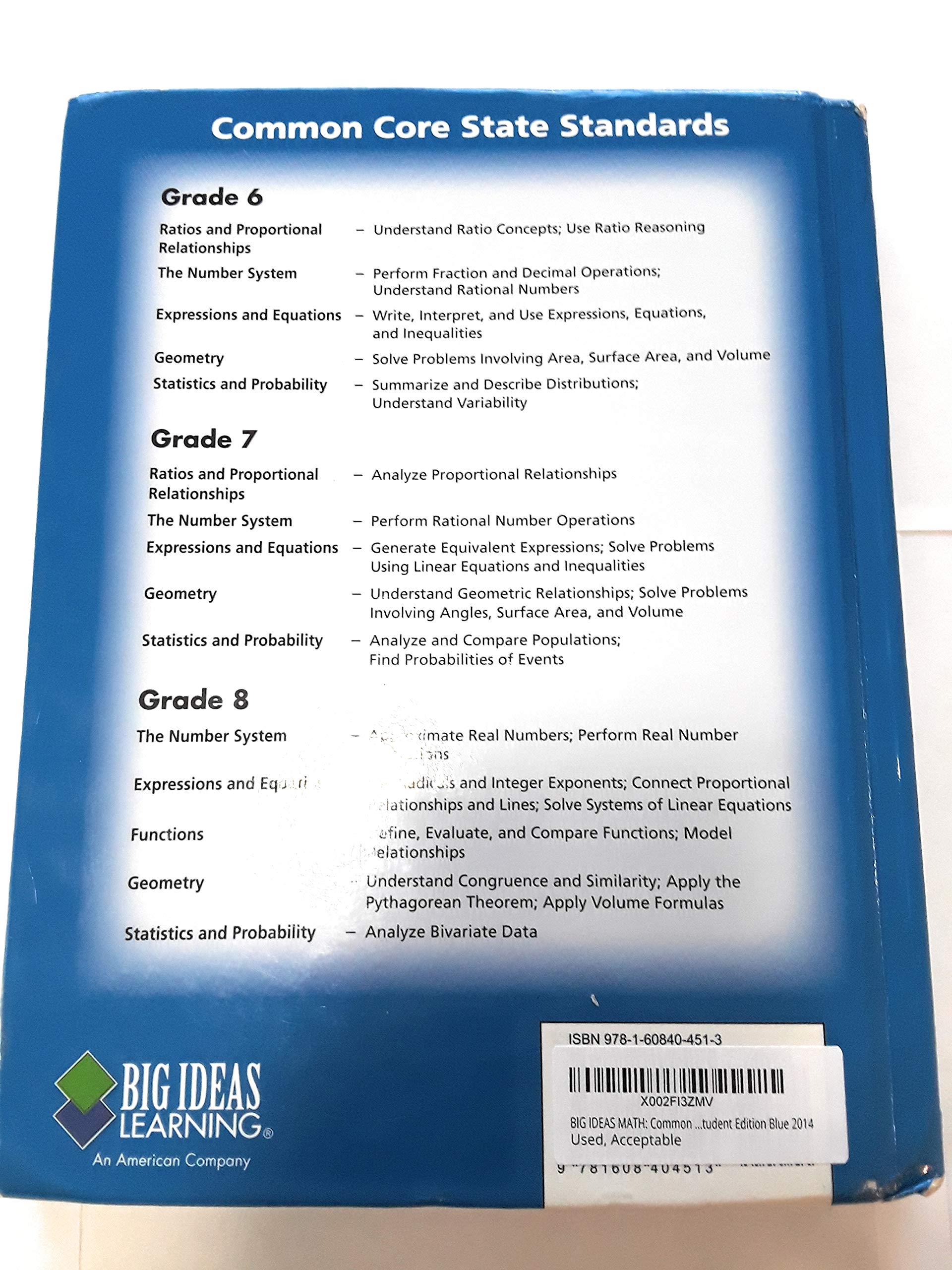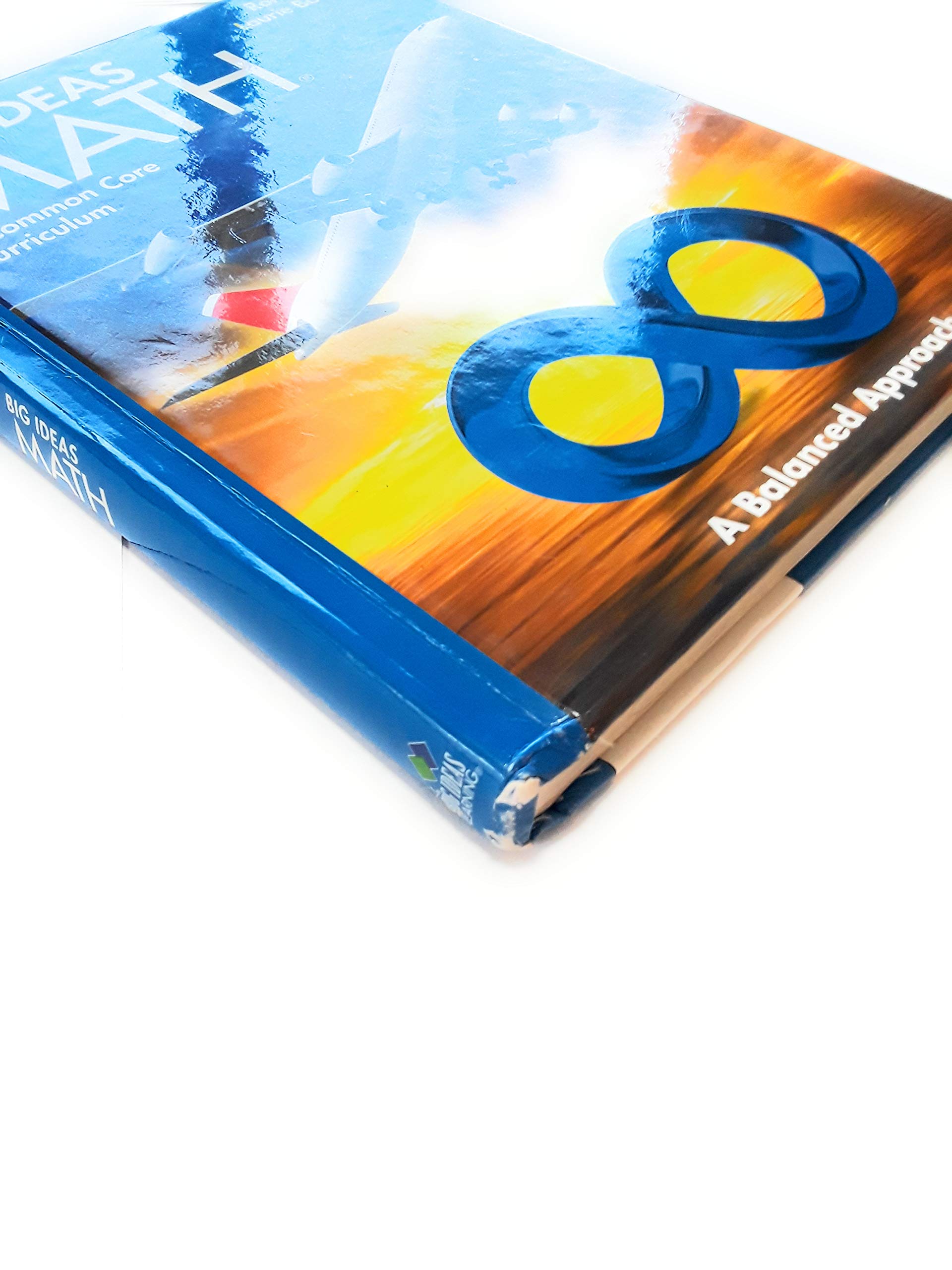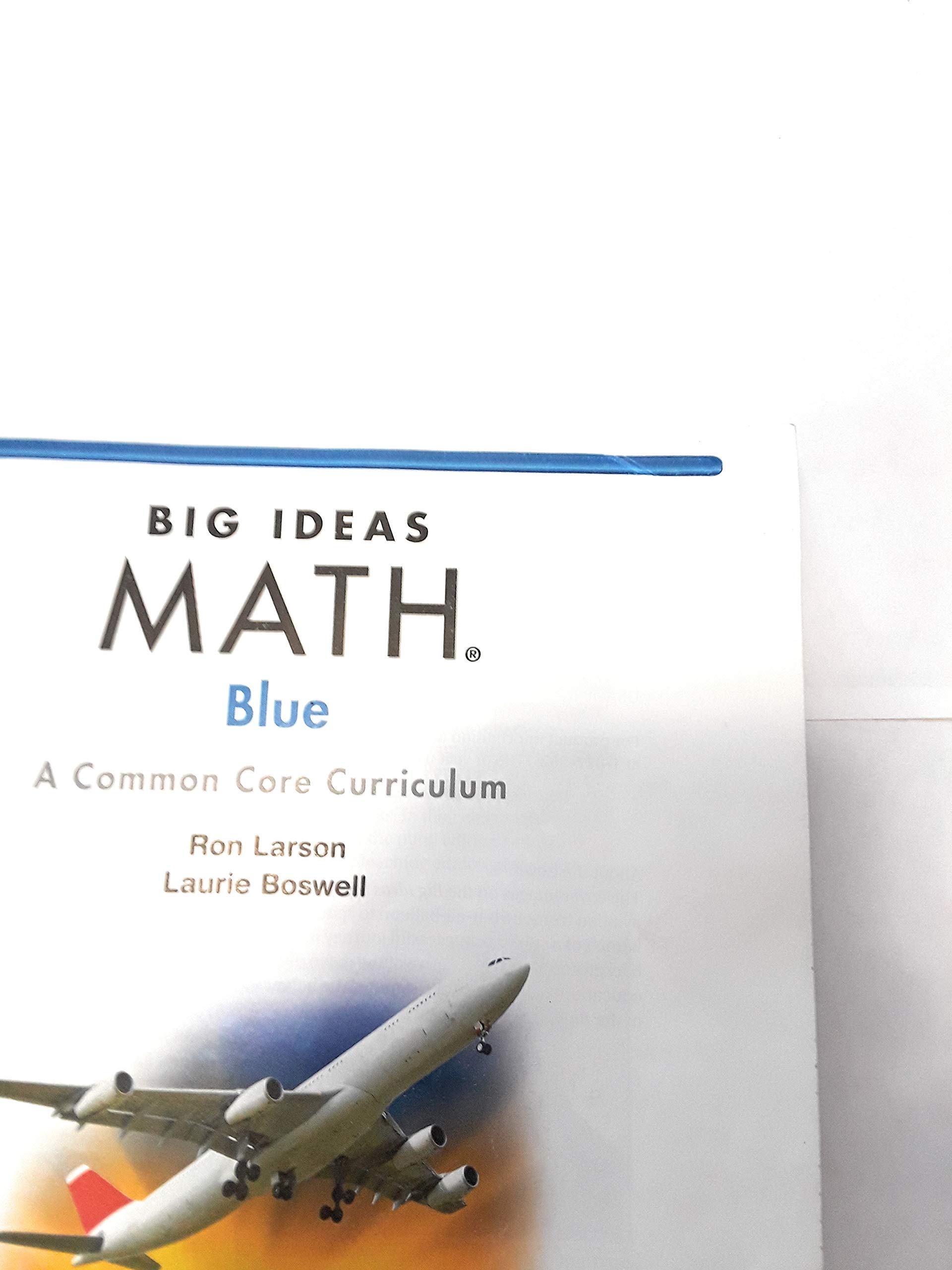





BIG IDEAS MATH: Common Core Student Edition Blue 2014
M**F
The Best of Old and New
Big Ideas Math manages to take all the rigor and interactivity required in Common Core without losing the examples, practice problems, quizzes, and tests of a classic math textbook. I bought this book after moving to a District that does not use a standard text--they use Illustrative Mathematics. I bought a copy for one of my colleagues in the SPED department, since our curriculum provides limited examples and practice problems. Wonderful selection of problems that is organized by difficulty and excellent Teacher's Edition. The math is at a fairly high level, so students who do not read at grade level or have math skills at grade level will need scaffolding.
S**A
Good for refreshing on algebra
The book is good for refreshing on algebra, but when I purchased, I used the website information. The book is quite basic. I was looking for information on how Euler formula for e was generated/derived. It turned out that is beyond the scope of this book.
H**A
Came in really handy
The book was easy to understand for the most part.
L**.
Good condition
Thanks
D**N
Five Stars
Well organized and lucidly explained.
K**
Four Stars
excellent no issue book Is new...
J**9
Screen your books!
There was a penis "carved into the cover!!!!! Not kidding. Don't resell that to kids!
T**M
Poor ordering of topics, not enough practice
I am writing a generic review of the Big Ideas Math curriculum and using the same review for all the books in the series... As a math tutor with over 25 years of experience, I have used and reviewed a lot of math texts. The Big Ideas Math curriculum is one of my least favorite. I've seen worse, but I've seen a lot better. It's too bad, because Larson and Boswell have written better texts, especially in the higher grades on more advanced concepts like trigonometry, pre-calculus, and calculus. Unfortunately, I cannot rave about the Big Ideas series.First off, it's a jumbled mess. By and large, most students coming into sixth grade are still not proficient at the trifecta of advanced arithmetic: fractions, decimals, and percents. As in foreign languages, becoming fluent at these three topics (and being able to effortlessly switch between them at a moment's notice) takes practice. By sixth grade, you hope that students will be able to use the terms "20 percent," "one fifth," "zero point two," "divide by five," "twenty hundredths" interchangeably. But it takes practice. At the end of most fifth-grade curricula, students have begun to understand the relationship between the various ways to skin a cat, so to speak. However, if they get to middle school and are thrown into the Big Ideas series, there is no mention of the equivalency of fractions, decimals, and percents for many, many chapters. They start learning about exponents, orders of operations, and even distributing factors through an algebraic expression. Those are noble topics to be explored, but not if a student can't quickly tell me (without pencil or calculator) that 60 percent of 40 is 24. If he can't do that, then his textbook really has business trying to expose him to distribution or the commutative property. Let's deal with basic arithmetic *before* algebra, please!Second, there simply aren't enough practice problems to gain proficiency. This is a common complaint of mine when reviewing books published after the year 2000. Each section has about 35 - 40 practice problems in it. Usually teachers only assign "odds" or "evens," giving the student fewer than 20 problems a night. In order to really gain proficiency, the student really ought to be doing all 40 problems per night, and the book should have roughly 60 - 70 problems from which the teacher could choose. Fewer homework problems means less practice, which means less proficiency. Period.Finally, related to my first point, the poor ordering of topics means that certain topics get completely overlooked. If you're an eighth-grade algebra student coming into a district using this curriculum, it's possible that your prior district taught more fundamental pre-algebra skills in grades six and seven, meaning you did learn fractions, decimals, percents, and exponents, but you did not learn how to multiply monomials or distribute monomials through polynomials or add/subtract polynomials. If you jump into Big Ideas Algebra, those topics are missing. Why? (They are, after all, essential Algebra 1 topics.) Because they glossed over them in the pre-algebra series, with no mention or review of them again in Algebra 1. Even if you're a student who goes through this entire series, there's a large chance you won't remember how to perform monomial operations properly by the time you get to Algebra 1, and then you're left struggling to remember a topic from last school year, even though your current book really ought to include an entire chapter devoted to it. (At that point, your parents are really grateful for Google.) I really wish I could say this series were better, but it's not.So what's a parent to do? To really prepare for Algebra 1, I like to use the Singapore Math US Edition 5A/5B/6A/6B workbooks and textbooks in late elementary school. For pre-algebra, I highly recommend Mary Lee Vivian's Pre-Algebra workbook and David Davison's Pre-Algebra textbook - California Edition by Prentice Hall. For Algebra 1, there is no better book, in my opinion, than Stanley Smith's Algebra - California Edition by Prentice Hall. (McDougall Littell also has a good Algebra 1 book, but I like Smith's better.) Many parents have hired me to teach their students from these other books, above and beyond the "school math" (Big Ideas), which they deem insufficient. It's more work for the student, but ultimately worth it.
Trustpilot
1 week ago
3 weeks ago